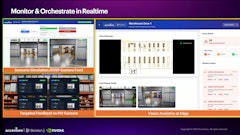
In the rush to modernize supply chains, it’s tempting to see AI-powered analytics as the answer to everything. Smarter forecasts, faster decisions, dynamic routing—it all sounds like a silver bullet. But those who’ve actually tried to plug AI into chaotic, siloed operations know the reality: analytics doesn’t fix broken processes. It amplifies them.
The organizations getting it right are flipping the script. They’re putting processes before technology. They understand that predictive and prescriptive analytics are only as good as the system they’re built on. That means before thinking about algorithms or models, they’re asking better questions: What decisions are we trying to improve? Who’s making them? How do we make our workflows cleaner, faster, and more accountable—so that AI can actually help, not complicate?
This isn’t about layering high-tech tools on top of old habits. It’s about fundamentally rethinking how decisions are made, and building systems around those decisions that are powered by data, yes—but driven by people. Built by people. For people.
And it starts with something deceptively simple: clarity.
You can’t optimize what you can’t explain. Supply chains often stretch across continents, systems, and time zones. But before connecting data feeds or training models, the most valuable thing a company can do is align on the basics: What does success look like? Where are decisions made? What slows us down? And where does intuition still trump insight?
Only with that clarity in hand does data integration make sense. Not as a technical lift, but as a way to support a more unified, end-to-end view of operations. Clean, harmonized data enables predictive models to do what they do best—forecast demand fluctuations, anticipate disruptions, flag supplier risks, or simulate production constraints. But more than that, clean process logic makes those forecasts meaningful. Because if your teams don’t agree on what’s happening today, it’s hard to trust a prediction about tomorrow.
And when trust enters the equation, focus follows. This single shift separates leaders from laggards in supply chain excellence.
Organizations that are clear on their processes don’t try to apply analytics to everything. They target specific, high-value use cases—where the link between data, action, and outcome is obvious. Predictive analytics might help a retail company anticipate store-level demand spikes based on weather, holidays, or local events. Prescriptive models might recommend smarter replenishment schedules to reduce overstocks without risking stockouts. In logistics, they might dynamically reroute freight based on real-time transit data. In procurement, they might surface early warnings about supplier performance degradation.
What makes these use cases effective isn’t just the math. It’s the context. They’re designed around the human decision-maker—not in opposition to them.
That’s the next big shift: making analytics usable.
Dashboards don’t drive change—decisions do. Predictive insights only work when they show up at the right moment, in the right place, for the right person. If a planner has to toggle between three platforms to find an answer, it won’t happen. If a driver on the floor doesn’t trust the system’s recommendation, they’ll default to habit. The best implementations embed insights directly into workflows—surfacing alerts in real time, integrating recommendations into familiar systems, and explaining not just what to do, but why.
Because usability isn’t just about design. It’s about confidence. People don’t act on what they don’t understand.
That’s why the most successful companies don’t chase full automation. They build for human-AI collaboration.
There’s a critical difference between a system that informs and one that decides. In supply chains, that distinction still matters. You might have a model that recommends shifting production from one facility to another based on input costs and capacity. But a supply chain leader might see a labor strike coming that the model doesn’t. Or they might factor in a long-term customer relationship that the system can't quantify. That’s not a flaw in the model—it’s the strength of the human. Context like that can’t be coded. Nor should it be ignored.
AI is at its best when it assists, not overrides. When it acts as an intelligent second opinion, not an invisible hand. And when it’s used not to replace people—but to give them better tools, faster context, and clearer options.
And for that to work, feedback must be built in.
The supply chain doesn’t sit still. What works in Q1 may fail in Q3. So the final ingredient in making predictive and prescriptive analytics stick is building in feedback loops—not just technical monitoring of model drift, but human loops where teams reflect: Did this recommendation help? What did we learn? How could we improve it? These loops ensure that models get smarter, decisions get sharper, and organizations stay adaptive in the face of constant change.
And that’s the real payoff.
Yes, predictive analytics can improve forecast accuracy. Yes, prescriptive insights can reduce lead times, optimize inventory, and cut costs. But the deeper value is strategic. It’s cultural. It’s in creating a supply chain that learns from itself, adapts faster than its environment, and aligns its people around shared, data-informed decisions.
Adopting predictive and prescriptive analytics isn’t a technology rollout. It’s a reset in how supply chains operate—how they learn, decide, and stay aligned in a world that doesn’t sit still.
The companies winning this game aren’t just adopting AI—they’re rethinking their assumptions. They’re designing for clarity, building trust into every insight, and putting people at the center of every optimization. In doing so, they’re not just getting better forecasts—they’re building better futures.



















